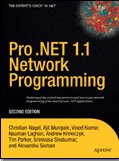Load balancing scales the performance of server-based programs, such as a Web server, by distributing client requests across multiple servers. Load balancing technologies, commonly referred to as load balancers, receive incoming requests and redirect them to a specific host if necessary.
Load balancers uses following algorithms to intelligently distribute load and/or maximize the utilization of all servers within the cluster.
Round-robin. A round-robin algorithm distributes the load equally to each server, regardless of the current number of connections or the response time. Round-robin is suitable when the servers in the cluster have equal processing capabilities; otherwise, some servers may receive more requests than they can process while others are using only part of their resources.
Weighted round-robin. A weighted round-robin algorithm accounts for the different processing capabilities of each server. Administrators manually assign a performance weight to each server, and a scheduling sequence is automatically generated according to the server weight. Requests are then directed to the different servers according to a round-robin scheduling sequence.
Least-connection. A least-connection algorithm sends requests to servers in a cluster, based on which server is currently serving the fewest connections.
Load-based. A load-based algorithm sends requests to servers in a cluster, based on which server currently has the lowest load.
The two major categories of load balancing implementations are:
Software-based load balancing. Software-based load balancing consists of special software that is installed on the servers in a load-balanced cluster. The software dispatches or accepts requests from the client to the servers, based on different algorithms. The algorithms can be a simple round-robin algorithm or a much more complicated algorithm that considers server affinity. For example,
Microsoft Network Load Balancing is a load balancing software for Web farms, and Microsoft Component Load Balancing is a load balancing software for application farms.
Hardware-based load balancing. Hardware-based load balancing consists of a specialized switch or router with software to give it load balancing functionality. This solution integrates switching and load balancing into a single device, which reduces the amount of extra hardware that is required to implement load balancing. Combining the two functions, however, also makes the device more difficult to troubleshoot.
Session State Management
Server session management requires the load balancer to direct all requests from one client within the same user session to the same server instance.
To avoid session loss due to server failure in a load balancing group, there are two approaches:
· Centralized state management
The centralized state management approach stores the session state information on a centralized server in a different tier from the application servers. Each time the application server receives a request that is part of a session; it fetches the session state from the session management server before processing the request. The session management service can be a database or another type of application that runs on a server that stores shared resources and is configured for high reliability.
· Asynchronous session state management.
Using the asynchronous session state management approach, every server broadcasts its session state to all other servers whenever the session state is changed; therefore, every server contains the state information for all sessions, and any server can process a request that is part of a session. Session state also survives individual server failures. This solution is cheaper because no extra equipment is required but harder to configure and maintain because it involves asynchronous calls. Storing the state for all sessions on every server can also be less efficient.





